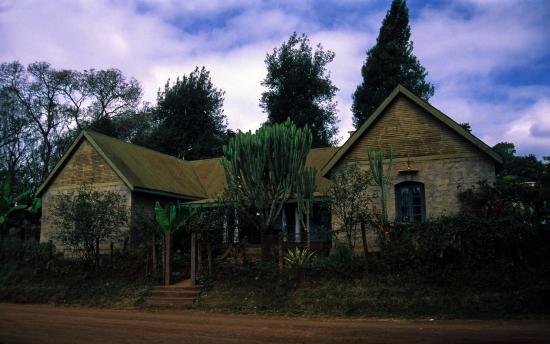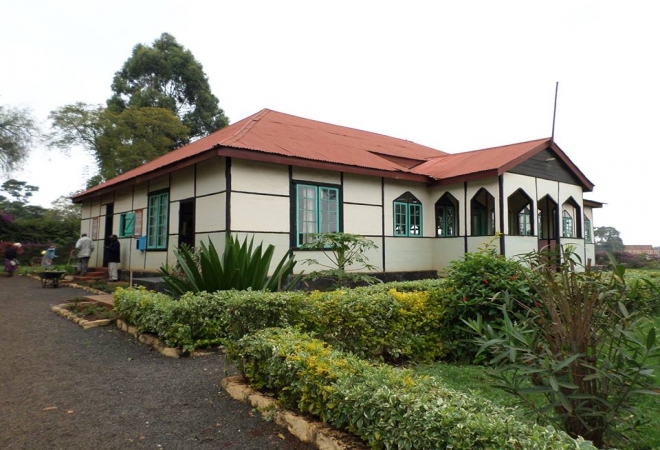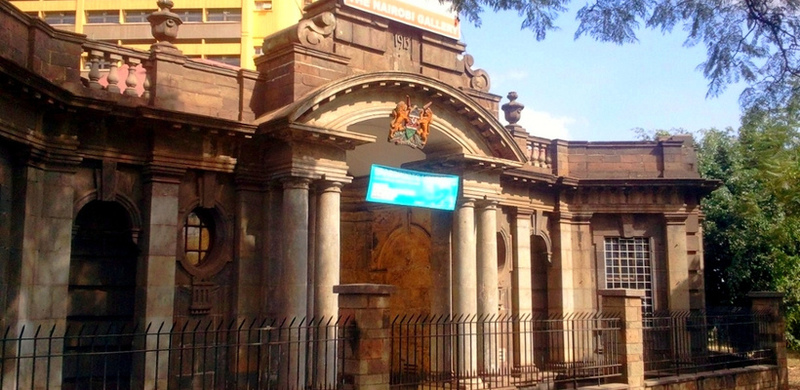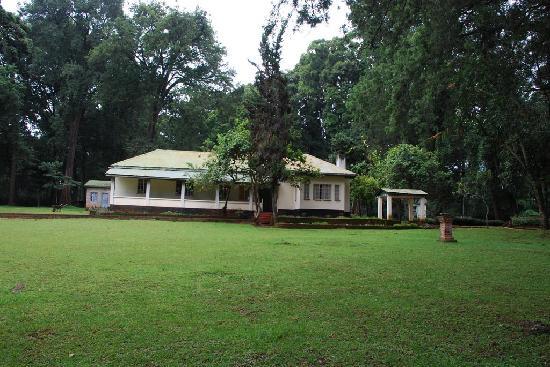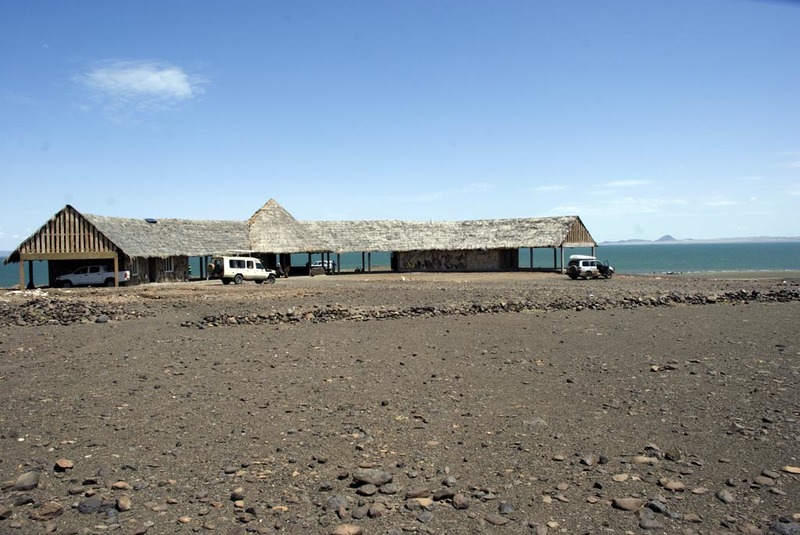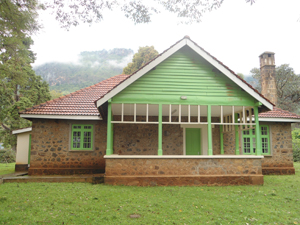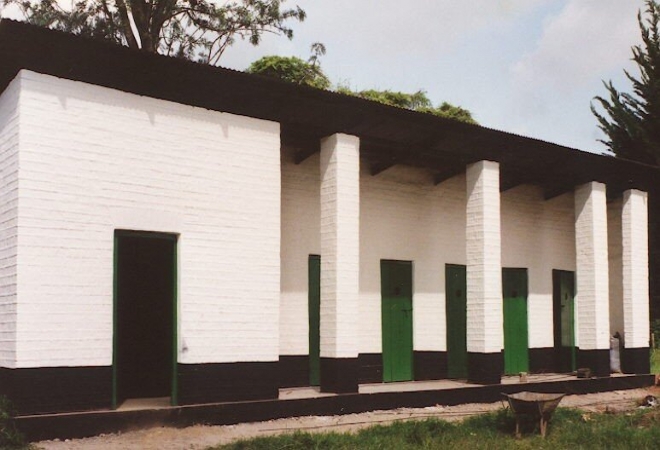- Home
- Attractions
- All Attractions
- ATTRACTIONS PROFILES
Takwa
Takwa ruins are the remains of a thriving 15th and 16th century Swahili trading town before it was abandoned in the seventeenth century. It is not only important because of its period of occupation but also because of its dense settlement and its relatively well preserved remains. The unique Friday Mosque with a large pillar a top the qibla wall is among the most notable features. This pillar is believed to symbolize the burial of a Sheikh be low the wall.
The position of the site at the narrowest location on the whole island, was most probably a strategy. Takwa's position/location with shallow waters must have been of considerable importance especially during its peak, when many of the sails that came into view were likely to be hostile.Therefore access to the site must have been primarily from the shallow channel which could only admit vessels of shallow draft.
Takwa eventual abandonment in the 17th century was due to salination of the once fresh water and endless fighting between Takwa and Pate people. These ruins were gazetted as a National Monument in 1982 in Gazette notice No. 1514. At present, Takwa is open daily to the Public. It is a very pleasant place for a casual visit, which can be complimented by a picnic and overnight camping.
-
Cultural Museum
-
Mosque
-
Mosque
-
Ruins
Lamu Museum
The Lamu museum lies in one of the most beautiful & serene locations on the African continent (A World Heritage Site). Built in 1891 as residence for colonial governors, Lamu Museum houses a selection of traditional Swahili artefacts. These include clothes and music instruments like the siwa horns.
Historical Background
The construction of Lamu Fort commenced in 1813, shortly after Lamu's victory over Pate and Mombasa in the battle of Shela. This major building task was reputedly undertaken with the cooperation of Seyyid Said, the Sultan of Oman who was then cultivating a promising new alliance with Lamu.
Upon its completion in about 1821 the fort marked the Southern corner of the traditional stone town and served as a garrison for Baluchi soldiers sent by the Sultan of Oman. Its protective presence encouraged new development around it. Thus confident Merchants erected the 19th century shopfront and buildings. By 1900 the Fort had become the image of the community, a role which it still plays to date.
-
Cultural Museum
-
Historical Museum
Rabai Museum
Rabai is well known in the annals of history as the place where Christianity and modern learning in Kenya started well over 150 years ago. In 1994 the Krapf Memorial Museum was founded to give formal and a perpetual reminder to monumental events during the advent of early missionaries. Stories about the first missionaries were passed on by word of mouth and are still told today.
Built in 1846 as the first Church edifice in Kenya, Rabai is situated about 25 km north-west of Mombasa, off the Nairobi-Mombasa highway on Mazeras-Kaloleni road, about half an hour?s drive from Mombasa.
Photo/LABAN WALLOGA
-
Art Gallery
-
Cultural Museum
-
Historical Museum
Fort Jesus
The Portuguese built Fort Jesus in 1593. The site chosen was a coral ridge at the entrance to the harbor. The Fort was designed by an Italian Architect and Engineer, Joao, Batista Cairato. The earliest known plan of the Fort is in a manuscript Atlas by Manuel Godinho de Heredia - dated 1610 which shows the original layout of the buildings inside the Fort.
Fort Jesus was built to secure the safety of Portuguese living on the East Coast of Africa. It has had a long history of hostilities of the interested parties that used to live in Mombasa. Perhaps no Fort in Africa has experienced such turbulence as Fort Jesus. Omani Arabs attacked the Fort from 1696 to 1698. The state of the Fort can be understood from the plan of Rezende of 1636 and other plans by Don Alvaro? Marquis of Cienfuegas and Jose? Lopes de Sa - made during the brief reoccupation by the Portuguese in 1728 - 1729. In the Cienfuegas plan, the names of the bastions are changed.
Between 1837 and 1895, the Fort was used as barracks for the soldiers. When the British protectorate was proclaimed on the 1st of July 1895, the Fort was converted into a prison. The huts were removed and cells were built. On the 24th October 1958, Fort Jesus was declared a National Park in the custody of the Trustees of the Kenya National Parks. Excavation was carried out and the Fort became a Museum in 1962. The Fort is now an important historical landmark in the East African region.
The Fort Jesus museum was built with a grant from the Gulbenkian Foundation. The exhibits consist of finds from archaeological excavations at Fort Jesus, Gede, Manda, Ungwana and other sites. Other objects on display were donated by individuals notably Mrs. J.C. White, Mr. C.E. Whitton and Mrs. W.S. Marchant. The Fort has lived through the years of hostilities and a hush climate and is structurally well maintained
-
Art Gallery
-
Fort
Meru Museum
The creation and further the establishment of Meru museum as one of the regional museums of the National Museums of Kenya was catapulted by a need to conserve the culture and traditional practices of the locals, the Meru speaking people.
Meru museum originated in 1974 in an old historic building that was vacated by the District Commissioner, whose office it had been since the colonial days. The building housing the Meru museum dates back to 1916. In the colonial era it served as an administrative node in the Mount Kenya region. The museum was a joint effort by the Meru Municipal and County Councils, together with the National Museums of Kenya in creating an attractive and formative center useful to the local people and to visitors.
Aspects of the cultural and diverse history of the Meru people are well illustrated by the numerous displays. Two rather unusual amenities of the Meru museum are a garden of indigenous medicinal shrubs and herbs together with a theatre. A compound of traditional huts has been constructed on the grounds, which are included in tours of the museum. An outdoor platform for dancing and musical programs along with sales kiosks complete the exterior construction.
The exhibitions serve largely in stimulating particularly among the young generation awareness of and appreciation for their cultural heritage and that of other communities as well as serving as an introduction to the region for visitors.
-
Community Tourism
-
Cultural Museum
-
Historical Museum
Nyeri Museum
Nyeri Museum is housed in a National monument which was once used as a“Native law court”. It was built in 1924 and started functioning in 1925. Its main objective was to deal with customary law cases, previously dealt with by clan elders in the villages. As these cases increased, one courtroom could not handle the volume and thus another hall was built.
Thus, the cases were divided among the two courts, with court one dealing with civil cases like pregnancy and debtor cases, and court two dealing with criminal cases like theft and murder. The first law court is unique in the sense that the seats are inbuilt and concrete, with those on which the judges used to sit on being slightly raised, giving a sense of authority.
-
Art Gallery
-
Community Tourism
-
Cultural Museum
Nairobi Gallery
Located at the intersection of Kenyatta Avenue/ Uhuru Highway in the heart of Nairobi City is the Nairobi Gallery. Built in 1913, this was the Old PC's office building fondly referred to as 'Hatches, Matches and Dispatches' because of the births, marriages and deaths that were recorded here. Today, the building is a National Monument and serves as a museum holding temporary art exhibitions.
-
Art Gallery
-
Historical Museum
Karen Blixen
Karen Blixen Museum was once the centre piece of a farm at the foot of the Ngong Hills owned by Danish Author Karen and her Swedish Husband, Baron Bror von Blixen Fincke. Located 10km from the city centre, the Museum belongs to a different time period in the history of Kenya. The farm house gained international fame with the release of the movie ‘Out of Africa’ an Oscar winning film based on Karen’s an autobiography by the same title.
The Museum is open to the Public every day (9.30 am to 6pm) including weekends and public holidays. Visitors are encouraged to be at the Museum by 5.30. Guided tours are offered continuously. A museum shop offers handicrafts, posters and postcards, the Movie ‘Out of Africa’, books and other Kenyan souvenirs. The grounds may be rented for wedding receptions, corporate functions and other events.
The Museum was built in 1912 by Swedish Engineer Ake Sjogren. Karen and her husband bought the Museum house in 1917 and it become the farm house for their 4500 acre farm, of which 600 acres was used for coffee farming. Their marriage failed after eight years and in 1921 the Baron moved on and left the running of the farm to Karen. Karen lived at the house until her return to Denmark in 1931. The house farm was bought by Remy Marin, who broke the land into 20 acre parcels for development. Subsequent development created the present suburb of Karen. Records indicate that a Lt. Col.G. Lloyd, an officer of the British Army bought the house in 1935 and lived there until his death in 1954, when it passed to his daughters, Mrs. G. Robersts and Lavender Llyod. A transfer of title to Mrs. J.P Robson and Mrs L.B. Hyde is in City Hall records in 1956. The house was sporadically occupied until purchased in 1964 by the Danish government and given to the Kenyan government as an independence gift.
The government set up a college of nutrition and the Museum was initially used as the principal’s house. In 1985 the shooting of a movie based on Karen’s autobiography began and the National Museums of Kenya expressed acquired the house for the purpose of establishing a Museum. The Museum was opened in 1986.
Karen also known by her pen name Isak Dinesen was born at Rungstedlund in Denmark on 17th of April 1885 as the second child of Wilhelm and Ingeborg Dinesen’s five children. She came to Africa in 1914 to marry her half cousin and carry out dairy farming in the then British Colony of Kenya. Her husband had however changed his mind and wanted to farm coffee. Her uncle Aage Westenholz financed the farm and members of both families were share holders. The coffee farm did not do well, suffering various tragedies including factory fire and continuous bad harvest. After her divorce, Karen was left to run the financially troubled farm on her own, a daunting task for a woman of that generation. She fell in love with an English man, Denis Finch Hatton, and his death in Tsavo in 1930 coupled with the failed farming left Karen little choice but to return to Denmark. She turned to writing as a career following her departure from Africa and published to increasing acclaim such works as Seven Gothic Tales(1934) Out of Africa(1937) and Babette Feat (1950). She died on her family estate, Rungsted, in 1962 at the age of 77.
The chronology of the house begins with its construction in 1912 by the wealthy Swedish civil engineer, later honorary Swedish consul to Kenya, Ake Sjogren. It served as the main residence on his Swedo-African coffee company , an estate of over 6,000 acres. The house was soon visited while on safari by the Danish count Mojen Frijs, who upon his return to Denmark persuaded his cousin to seek their fortune in Kenya.Baron Blixen acquired part of the estate in 1913 and the remainder in 1916. Karen Blixen called the house "Bogani" or "Mbogani" meaning a house in the woods, and occupied it until 1931.The Karen Blixen house meets three of the customary criteria for historical significance. First, it is associated with the broad historical pattern of European settlement andcultivation of East Africa. Second, it is associated with the life of aperson significant to our past as the home of Baroness Karen Blixen from 1917 -1931. As such, it served as the setting and basis of herwell known book Out of Africa, written under the pseudonym Isak Dinesenand as a gathering place for other well known personalities of the period. Third, the building embodies the distinctive characteristicsof its type, period and method of construction. The house's architecture is typical of late 19th century bungalow architecture,including the spacious rooms, horizontal layout verandas, tile roof and stone construction typical of scores of residences built throughout European suburbs of Nairobi in early decades.
By1985, with renewed interest in Karen Blixen occasioned by the film production of Out of Africa, an agreement was reach with the collage for the house to become part of the National Museums of Kenya. Many pieces of furniture that Karen Blixen sold to Lady McMillan on her departure were acquired back and constitute part of the exhibition in the Museum. The Museum house remains a serene environment that seems to belong to the past, surrounded by a tranquil garden and indigenous forest, with a splendid view of Karen’s beloved Ngong Hills. She honours the hills with the phrase ‘I had a farm in Africa at the foot of the Ngong Hills’.
-
Art Gallery
-
Historical Museum
Kabarnet Museum
Kabarnet museum opened its doors to the public in 1996 in the former District Commissioner Residence. It has four main public galleries featuring the Rift Valley people, their culture, its environment, indigenous knowledge and science for education. The main attraction include, the exhibits especially on the culture of the Keiyo / Marakwet, Samburu, Pokot, Nandi and Kipsigis. In addition an overview of the history of the district, from pre-colonial, colonial and post-independence era are on display. While the playground, homesteads and park provides visitors with attractive outdoor scenes.
Kabarnet's location is in close proximity to various attractive scenes, which include Lake Bogoria, Baringo and the Tugen hills. Other attractions include Paleontological, archaeological and ethnographic sites in the district, such as the Chesowanja, Tabarin, Kipsaraman and Sirikwa holes near Moiben. Kerio Game Reserve Park and Flourspar Mining Company, which are not far from Kabarnet, are some of the beautiful sceneries one would not wish to miss while in Kabarnet.
-
Art Gallery
-
Community Tourism
-
Cultural Museum
Loiyangalani Desert Museum
Located on top of a hill, with a backdrop of the picturesque Lake Turkana, also known as the "Jade Sea", the Desert Museum, Loiyangalani was opened in June 2008. The National Museums of Kenya in realizing the unique cultures in this region and following its mandate to preserve and promote Kenya's rich cultural and natural heritage, presents you with rich heritage of the eight communities living around Lake Turkana.
Loiyangalani is a small town located on the southeastern coast of the lake. The name Loiyangalani, means "a place of many trees" in the native Samburu Language and is also home to the El Molos, an almost extinct community.
The town was formed from a freshwater spring and can be termed as an Oasis in the desert. It is fast becoming a tourist attraction due to the unique desert environment coupled with the rich cultural lifestyle of the peoples of Lake Turkana. Some of the amenities in the town include:
- Airstrip
- Post Office
- Fishing Station
- Campsites
- Lodges
The communities living in this area include the; El Molo, Turkana, Pokot, Rendile, Samburu, Gabbra, Watta and Dassanach.
Activities and attractions:
- Desert Museum
- Rock Art
- El Molo Village Tours
- El Molo Shrines
- Lake Turkana
- Beach
- Local Market
- Camping
-
Community Tourism
-
Cultural Museum
Tambach Museum
Tambach lies at an altitude of 6,500 feet at the top of the Elgeiyo Escarpment. It has a spectacular view of the Kerio Valley, the Tugen Hills, and the Kerio River.
HISTORY OF THE MUSEUM
Tambach is one of the oldest towns in Kenya. It was established in 1920s as a British colonial center of administering Elgeiyo and Marakwet people For much of the colonial period, the town grew from a tiny village to a busy urban center.By the end of 1950s, Tambach developed into a very pretty little town.
British colonialists constructed a number of buildings that included; administrative offices, the prestigious Government African School, A church, detention camp and hospital. Today, the historical buildings and the cultural landscape are treasured monuments and form part of the heritage of the Elgeiyo/Marakwet County. Currently, Tambach and Iten form Iten-Tambach Town Council, a local authority in greater Elgeiyo/Marakwet County.
The idea of establishing a museum at Tambach was conceived by the National Museums of Kenya in 2002. The museum was established to safeguard the Tambach heritage site and the culture of the Keiyo and Marakwet people.Tambach has a rich cultural heritage. It is famous for the Sirikwa Holes constructed by the Sirikwa people in the 17th & 18th centuries.
It also has a rich colonial history.In 2003, NMK renovated the former District Commissioner’s residence, a seven roomed bungalow to create an exhibition space for ethnographic and archaeological collections of the Elgeiyo/Marakwet County.Tambach Heritage Town Exhibition is the premier exhibition for this Museum and was funded by the Royal Norwegian Embassy in Kenya through the efforts by AFRICOM (International Council of African Museums).
It is the first museum exhibition in the entire county and is anticipated to promote heritage activities and form part of the North Rift Circuit as a major tourist attraction in this area.This exhibition highlights the development of Tambach town during the colonial and independence period and factors which influenced its growth and decline and now renewed growth.The exhibition also explores the culture (past and present) of its inhabitants-the Keiyo and the Marakwet.
It looks at their lifestyle, livelihoods and traditions in the context of the surrounding- the Keiyo Valley.The museum plans to engage in the collection, documentation, research, education and exhibition of the cultural heritage of the local community.The museum was officially opened
-
Art Gallery
-
Community Tourism
-
Cultural Museum
Kapenguria Museum
The Kapenguria museum was opened in 1993. It is located in Kapenguria town, at the site where the six most influential leaders in the struggle for independence were detained. To preserve the history of the struggle for independence, the National Museums of Kenya with financial support from the Dutch funded Arid and Semi-Arid Lands project in West Pokot preserved and rehabilitated the prison.
The Kapenguria six were the founding fathers of the Kenyan Nation - Mzee Jomo Kenyatta, Kungu Karumba, Mr. Fred Kubai, Mr. Paul Ngei, Bildad Kaggia and the Hon. Ramogi Achieng Oneko. All of them have passed on although their legacy will always remain alive.Displays in the Museum include books and documents in a memorial library in honour of all heroes who participated in the struggle for independence.
The cells, the ethnographic galleries and the Pokot homestead provide the foundation of Kapenguria museum. The Pokot gallery houses artifacts and photographic collections on the Pokot people. The creation and establishment of this gallery is credited to Mrs. Anny Mulder, an anthropologist who carried out work in this area among the Pokot people. Other sections of the museum are the political development exhibits, a section containing exhibits revealing pre-colonial Kenya, slavery, the arrival of Europeans, African resistance to colonial rule and activities of pioneer nationalists.
-
Art Gallery
-
Community Tourism
-
Historical Museum
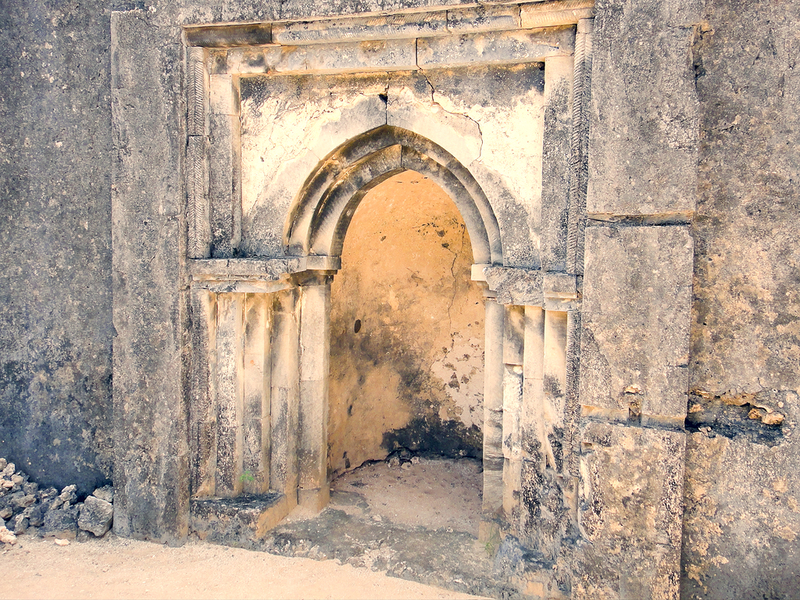
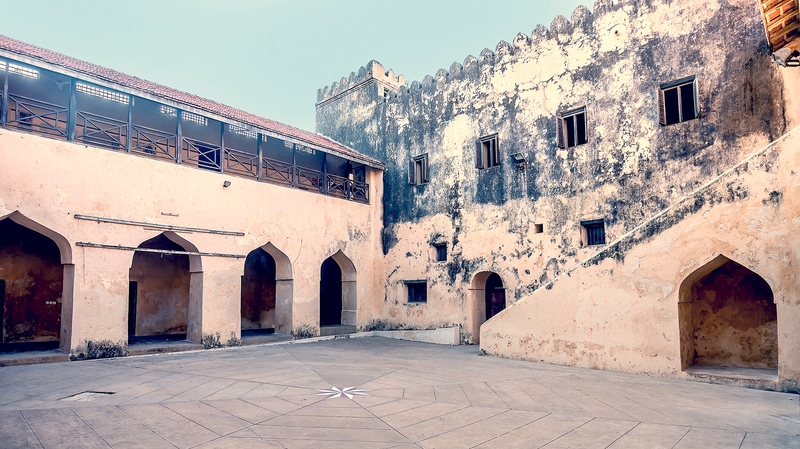
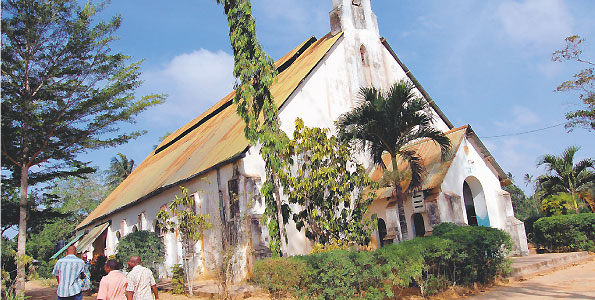
.jpg)
